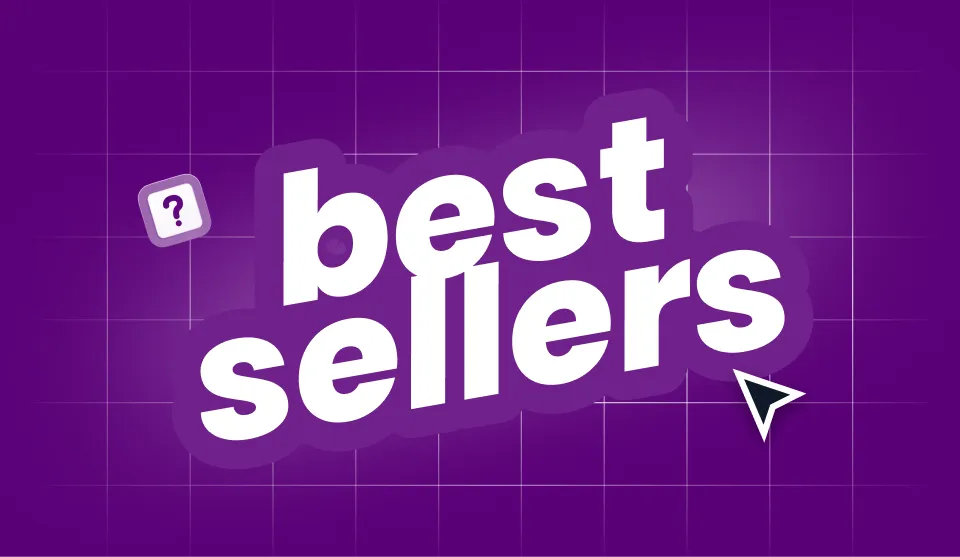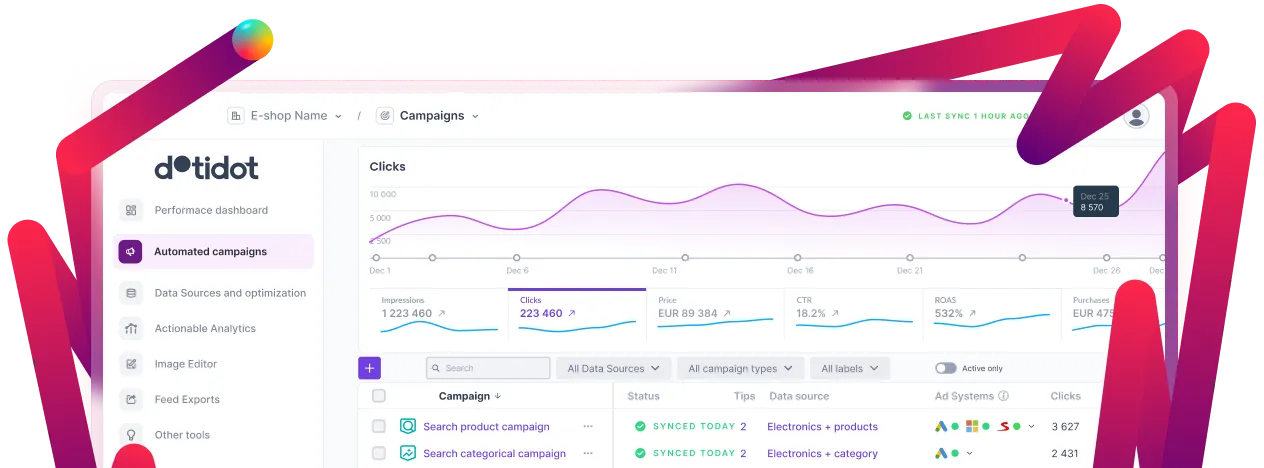Why brands use Bestseller campaigns
Campaigns with automated bidding tend to spread budget across a broad catalog. While this works for discovery, your bestsellers often deserve more focus. By isolating and promoting them separately, you ensure they receive the visibility and budget they need to scale even further. Instead of blending into the overall mix, your top products get their own spotlight.
How structuring Bestseller campaigns looks like
When setting up Bestseller campaigns, the goal is to separate proven winners and give them dedicated budget and targeting.
Key principles:
- Define clear criteria for what counts as a “bestseller” (e.g., top 10% by sales, revenue, or ROAS)
- Allocate sufficient budget to make sure your bestselling products display all the time
- Adjust structure depending on catalog size: single campaign for smaller sets, multiple for large product catalogs
- Use campaign exclusions to avoid overlap with your main PMax or Shopping campaigns
Segmentation approaches
Single campaign structure
- All Bestsellers split by category: One campaign with multiple Asset Groups, each representing a product category
- Best of Category groups: Take top performers from each category and group them together under one umbrella campaign
Multi-campaign structure
- Create dedicated campaigns for each major category (e.g., “Best of Shoes,” “Best of Jackets”)
- Recommended if you have 20+ products per category
- Allows differentiated bidding strategies and budget control per category.
Set up a graduation rule
Your bestseller definition should evolve over time. For example:
- Include only products with 30+ conversions per month and stable ROAS
- Refresh the Bestseller list monthly or quarterly. With Dotidot, you can do it even on daily basis
- Products that lose momentum should be removed and reintegrated into main campaigns
Number of sales vs. conversion value
When identifying bestsellers, you can focus on either the number of sales or the conversion value.
- The number of sales highlights popular products with broad appeal, ideal for attracting new customers or driving repeat purchases.
- Conversion value focuses on high-revenue items, perfect for optimizing profitability and maximizing returns on ad spend.
For the best results, consider a balanced approach: prioritize products with both high sales and high revenue, then tailor your campaigns based on your goals—boosting reach with popular items or driving profits with high-value products.
TIP: If you have sufficient conversion data, consider including the ROAS metric for each channel into your segmentation formula. A combination of a decent number of sales, high revenue, and sustainable ROAS can help identify products with the best possible performance.
Pro tips from the field
We asked PPC and Social specialists who work with Bestseller campaigns to share their top tips:
- Define bestsellers dynamically: Use a rolling 30–90 day window to adapt to changing demand. With Dotidot, this is a piece of cake.
- Avoid over-spending on a narrow product set. Start small, scale up gradually.
- Bestsellers on Meta often translate well to Google, but the reverse isn’t always true.
- Test creative variations. Highlight customer reviews, “#1 seller” tags, or urgency-based messaging to strengthen bestseller positioning.
- Use seasonality smartly: Rotate seasonal bestsellers into campaigns before peak demand hits (e.g., coats in September).







